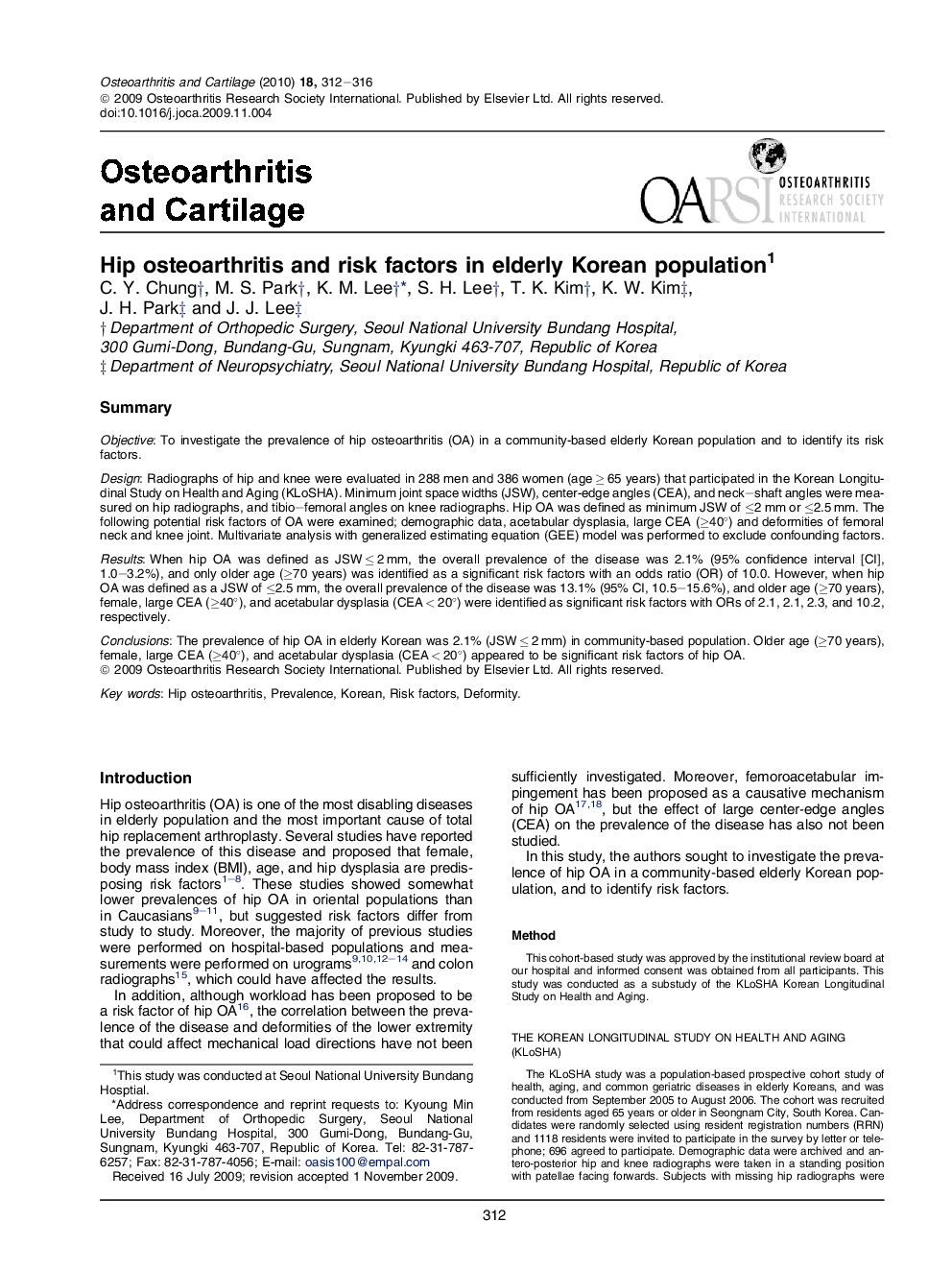| Article ID | Journal | Published Year | Pages | File Type |
|---|---|---|---|---|
| 3381313 | Osteoarthritis and Cartilage | 2010 | 5 Pages |
SummaryObjectiveTo investigate the prevalence of hip osteoarthritis (OA) in a community-based elderly Korean population and to identify its risk factors.DesignRadiographs of hip and knee were evaluated in 288 men and 386 women (age ≥ 65 years) that participated in the Korean Longitudinal Study on Health and Aging (KLoSHA). Minimum joint space widths (JSW), center-edge angles (CEA), and neck–shaft angles were measured on hip radiographs, and tibio–femoral angles on knee radiographs. Hip OA was defined as minimum JSW of ≤2 mm or ≤2.5 mm. The following potential risk factors of OA were examined; demographic data, acetabular dysplasia, large CEA (≥40°) and deformities of femoral neck and knee joint. Multivariate analysis with generalized estimating equation (GEE) model was performed to exclude confounding factors.ResultsWhen hip OA was defined as JSW ≤ 2 mm, the overall prevalence of the disease was 2.1% (95% confidence interval [CI], 1.0–3.2%), and only older age (≥70 years) was identified as a significant risk factors with an odds ratio (OR) of 10.0. However, when hip OA was defined as a JSW of ≤2.5 mm, the overall prevalence of the disease was 13.1% (95% CI, 10.5–15.6%), and older age (≥70 years), female, large CEA (≥40°), and acetabular dysplasia (CEA < 20°) were identified as significant risk factors with ORs of 2.1, 2.1, 2.3, and 10.2, respectively.ConclusionsThe prevalence of hip OA in elderly Korean was 2.1% (JSW ≤ 2 mm) in community-based population. Older age (≥70 years), female, large CEA (≥40°), and acetabular dysplasia (CEA < 20°) appeared to be significant risk factors of hip OA.
